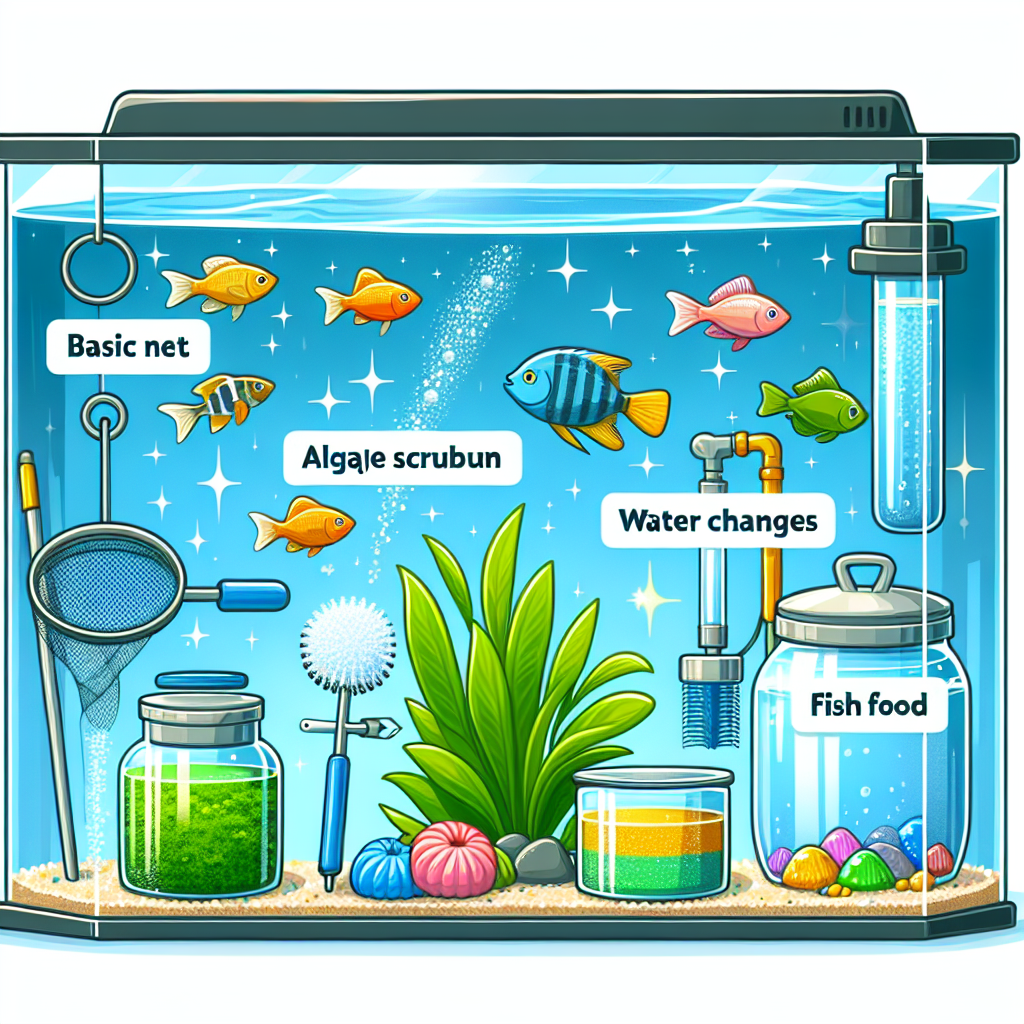
Introduction
Maintaining a pristine aquarium is not only about aesthetic appeal but also about ensuring a healthy environment for your aquatic pets. A well-maintained fish tank supports vibrant, healthy fish and thriving plants, creating an enchanting underwater ecosystem. Regular maintenance tasks are crucial for preventing common problems such as algae overgrowth, disease, and water quality issues. This essential fish tank maintenance checklist will guide you through the necessary steps to keep your aquarium in top-notch condition.
Understanding the Basics of Aquarium Maintenance
Before diving into the specifics, it’s important to understand the elements that contribute to a healthy aquarium environment. The key factors include water quality, filtration, lighting, and temperature. Each of these components plays a vital role in the well-being of your aquatic life.
- Water Quality: Maintaining the right pH balance, ammonia, nitrite, and nitrate levels is crucial. Regular water testing and changes help manage these parameters.
- Filtration: Filters remove waste, uneaten food, and toxins from the water, keeping it clean and safe for fish.
- Lighting: Proper lighting is essential for fish health and plant growth. It also helps to prevent algae bloom.
- Temperature: Most fish species require a stable temperature range. A reliable heater and thermometer are essential tools.
Daily Maintenance Tasks
While it might seem minimal, daily attention to your aquarium can prevent bigger problems down the line.
Visual Inspection
Start each day with a quick visual inspection of your aquarium. Look for any signs of distress in your fish, such as erratic swimming or unusual behavior, which can indicate stress or disease. Also, check for any visible changes in the tank’s water clarity or color.
Feeding
Feed your fish once or twice a day, but avoid overfeeding. Excess food can decompose and cause spikes in ammonia and nitrite levels, leading to poor water quality. Only provide as much food as your fish can consume in a few minutes.
Weekly Maintenance Tasks
Weekly maintenance is more involved and focuses on maintaining water quality and cleanliness.
Water Testing
Test your water weekly for pH, ammonia, nitrite, and nitrate levels using a reliable aquarium test kit. This helps you monitor the condition of your tank’s water and adjust as necessary to maintain a safe environment for your fish.
Water Changes
Perform a partial water change of about 10-15%. This helps remove accumulated waste and toxins and replenishes essential minerals in the tank. Use a gravel vacuum to clean the substrate and remove debris.
Check Equipment
Inspect all equipment, including filters, heaters, and lights, to ensure they are functioning correctly. Clean filter intakes and outlets to prevent blockages and ensure efficient water flow.
Bi-Weekly Maintenance Tasks
Every two weeks, a deeper clean and check-up will ensure your aquarium stays pristine.
Algae Control
Algae can quickly become a nuisance if not controlled. Use an algae scraper or magnetic cleaner to remove algae from the glass. Check decorations and plants for algae growth and clean as necessary.
Filter Maintenance
Clean your filter media in the tank water you’ve removed during water changes. Avoid using tap water as it can kill the beneficial bacteria in the filter. Replace filter media as per the manufacturer’s instructions, typically every 4-6 weeks.
Monthly Maintenance Tasks
Monthly tasks are more comprehensive and focus on overall tank health and equipment maintenance.
Deep Cleaning
Perform a deep cleaning of the tank, including removing and cleaning any decorations and plants. Prune dead plant leaves and check the health of live plants.
Equipment Calibration
Calibrate any equipment such as heaters and pH meters to ensure accurate readings and consistent performance.
Quarterly and Annual Maintenance Tasks
These tasks are less frequent but just as important for long-term aquarium health.
Replace Light Bulbs
Replace aquarium light bulbs every 6-12 months, even if they haven’t burned out. Over time, bulbs lose their intensity and spectrum, which can affect plant growth and algae control.
Inspect Silicone Seals
Check the silicone seals of your aquarium for any signs of wear or damage. This is crucial to prevent leaks and maintain structural integrity.
Review Stock Levels
Evaluate the stocking levels of your tank. As fish grow, they may require more space, so adjust your stocking levels accordingly to prevent overcrowding.
Additional Tips for Pristine Aquariums
In addition to the regular maintenance tasks, consider the following tips to ensure your aquarium remains healthy and beautiful:
Quarantine New Fish
Always quarantine new fish before adding them to your main tank. This helps prevent the introduction of diseases that can affect your existing fish population.
Maintain a Consistent Routine
Consistency is key to successful aquarium maintenance. Set a regular schedule and stick to it to ensure all tasks are completed on time.
Educate Yourself
Stay informed about the specific needs of your fish species. Different fish have different requirements in terms of diet, water parameters, and tank mates.
Conclusion
Regular and thorough maintenance is the backbone of a pristine aquarium. By adhering to a structured maintenance schedule, you can prevent common problems and create a healthy, thriving environment for your fish and plants. Remember, a clean and well-maintained aquarium not only enhances the beauty of your home but also ensures the well-being of your aquatic pets. With dedication and attention to detail, your aquarium can be a source of joy and relaxation for years to come.
#ChatGPT assisted in the creation of this article.








